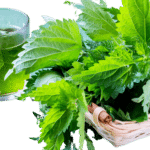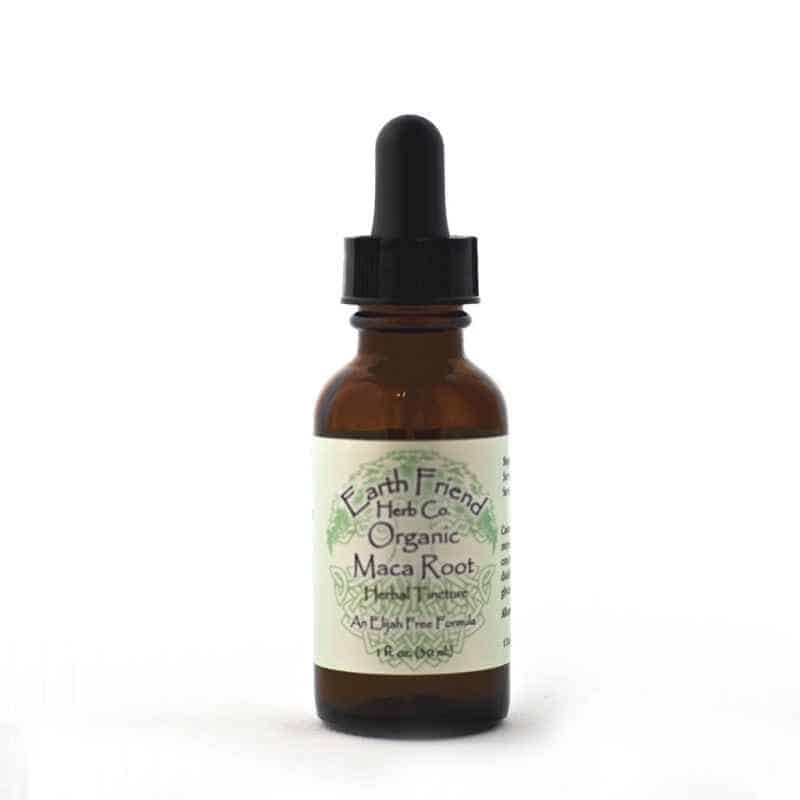No products in the cart.
Maca (Lepidium Meyenii)
Benefits
Men
- Increases energy (Chronic Fatigue)
- Treat sexual dysfunction (Loss of Libido)
- Increases stamina & athletic performance
- Nourishes glandular system
- Fertility enhancement
- Improves physical and emotional well being
- Promotes mental clarity
- Balance hormones
Women
- Treat PMS (Mood Swings)
- Menopause symptom relief (Hot Flashes)
- Sexual stimulation
- Nourishes glandular system
- HRT alternative(Hormone Replacement Therapy)
- Increases stamina & athletic performance
- Increases energy (Chronic Fatigue)
- Balance hormones
Menopause? No Problem – Symptom Free Menopause
Menopause is a natural progression in a woman’s life – it is the cessation of menses generally accompanied by symptoms. This transition is unique for every woman yet there are ways to prevent and diminish the symptoms that typically accompany menopause.
Symptoms
- Diminished libido
- Insomnia
- Mood swing (blues & depression)
- Migraines, memory problems
- Lower energy levels
- Palpitations
- Acceleration of the aging process
- Joint aches and pains
- Bone pain
- Vaginal dryness
Balance and Vitality
- Increases libido
- Deeper sleep
- Balances moods
- Enhances memory and brain function
- Increases energy levels
- Helps adapt to stress
- Slows the aging process
- Lessens aches and pain, more endurance and stamina
- Prevents osteoporosis, high calcium and vegetable protein
- Reverses vaginal dryness
Menopause doesn’t have to be unbearable – implementing Maca Power into a sensible diet and lifestyle regime can produce positive effects.
Maca History and Facts
On the high Andes, at extreme altitude, grows Maca. It is a potato-like primary food staple for entire populations living at high altitudes. They trade it for beans and corn with those farming the lower altitudes. It is interesting in that it is a tuberous root, but propagates by means of flowering and seeds. The early Spaniards arriving in these high altitude regions soon noticed that while the natives’ livestock herds reproduced vigorously, their own herds languished uninterested in life and “love.” The natives shared their secret of Maca. Soon the Spanish herds were reproducing as lively as the indigenous herds. Maca made the difference.
Maca root grows high in the Andes of Peru, as high as 11,000 feet above sea level. It is one of the oldest and most resilient plants on the planet. It grows in places where no other plants survive, because of extreme climatic conditions in high altitudes. This member of the brassica family has long leaves around 15cm tall, the root itself looks very much like beetroot, and is usually 2-8 cm. There are a few botanical varieties of Maca that differ in color of the root, from white, to pale pink, grey, purple, yellow, or even black. Some look more like potatoes, some are more similar to beets or radishes. The name Maca comes from the native word Ma-ca, meaning food from the highlands that gives strength. Maca has been used by native Peruvians for thousands of years – it can be documented back to around 3800 B.C. and it was cultivated for both its nutritional and medicinal value. Much later, in 1549 A.D., the Spanish explorer Captain de Soto received Maca as a gift from the Peruvians and brought it to Europe.
Maca root has been used by native Indians in Peru as a vital ingredient to health for thousands of years. Maca’s use goes back to around 3800 B.C., when Peruvian Indians cultivated and ate it for both its nutritional and medicinal value. Centuries later in 1549 A.D., records indicate that, during his time in Peru, the Spanish explorer Captain de Soto received Maca from the Indians as a gift in return for his help in improving methods of animal husbandry in the Peruvian Castille region. By 1572, as Maca’s health-giving properties gained notoriety, the Chinchayochas Indians had begun using Maca root for barter. It was not until 1843 that this plant was studied by scientists and given the botanical name of Lepidium meyenii, Walpers… after German Botanist Gerhard Walpers
Maca root grows in the mountains of Peru at high altitudes of 7,000 to 11,000 feet, making it the highest altitude growing plant in the world. Maca is a radish-like root vegetable that is related to the potato family, and is tuberous and spherical in form. The root itself is about three to six centimeters across and 4.7 centimeters in length. There are four recognized types of Maca Root based on the color of the root. Root color varies from creamy yellow or light pink to dark purple or black. Chemically Maca root contains significant amounts of amino acids, carbohydrates, and minerals including calcium, phosphorous, zinc, magnesium, iron, as well as vitamins B1, B2, B12, C and E. Peruvian Maca also includes a number of glycosides.
As a nutritional supplement, Peruvian Maca has generalized tonic effects on the biochemical functioning of the human body. Chief among these effects is the enhancement of endocrine function. The endocrine system includes all of the glands, and the hormones they secrete, that exist in the body and that control such conditions as fertility, sexual function, digestion, brain and nervous system physiology, and energy levels. Hormonal regulation is responsible for all of the physiological attributes that enable us to enjoy the myriad sensations of being vibrantly alive, including those related to sexual arousal, physical activity and mental-emotional states of being. Maca root has also been called an adaptogen, which means that it increases the body’s ability to defend itself against both physical and mental weakening, hence potential illness.
It is believed it achieves this by supporting adrenal and pituitary gland health, both of which underlie proper endocrine function. Maca Power is cultivated in the Junin plateau of Peru’s central highlands at 4,100 meters above sea level, on ancient terraces. It is a Certified Organically grown and processed product, which is non-irradiated and chemical-free. The Maca root is dried at a specific low temperature and is milled to our specifications, ensuring maximum preservation of nutrient and ingredient content. The result is the optimal light-colored and non-oxidized sweet taste of a high-quality product.
Known Modern Applications
Traditionally, Maca has been used for a variety purposes, which can differ for men and women. For example, women have found it helps relieve the symptoms of PMS and menopause. Women tend to notice a dramatic decline in hot flashes and night sweats. Men have used it to enhance fertility and sexual function. Users of Maca root tend to derive a variety of benefits in accordance with their individual needs. However, both men and women have found that it significantly boosts libido and sex drive, increases energy, stamina and the feeling of general well-being. In fact, recently Maca has been used as an excellent alternative to anabolic steroids among athletes seeking muscle hypertrophy. Unlike many other energy- and muscle-boosting substances, such as anabolic steroids, Maca contains no chemicals that interfere with or over-activate normal endocrine function.
How does Maca Root aid in relief?
First and foremost it balances the hormonal system. It works on the pituitary gland – the master gland – which regulates all hormone production in the body. Hot flashes are diminished; sleep is normalized while stress levels are reduced when incorporating Maca Power into a daily wellness routine. Peruvian Maca root encourages the body to produce its own hormones to restore balance, instead of introducing hormones to the body. It’s the simple, natural approach that brings a world of difference to women suffering from the sometimes debilitating symptoms. Maca root is a Superfood naturally high in vitamins and minerals the body needs for nourishment.
Its adaptogenic qualities make it a multifaceted herb useful for a wide variety of conditions, women of all ages can benefit from. Adaptogens increase the body’s ability to cope with physical, chemical and biological stress. Characteristics of an adaptogenic herb are nontoxic, while increasing resistance to stress, fatigue & distress – helping the body regain balance. Ginseng, is another (perhaps more familiar) adaptogen, that has been used in Asia for thousands of years for strength and vitality and it’s reputed aphrodisiac effects. Maca root falls into this same category, yet it is relatively new to North America although it’s been used in Peru for thousands of years. Take your health into your hands, and experience the wonders of this ancient Peruvian herb – Maca Power the Inca Superfood
Maca Root Active Ingredients
- Alkaloids
- Trypterphene
- Phenolic compounds
- Flavonoids and/or coimarins
- Tannins
- Glycosides
- Saponins
- Free amino acids
- Secondary aliphatic amines
- Tertiary amines
- 2 groups of novel compounds – the macamides, and the macaenes (these agents are believed to be directly responsible for maca’s sex-boosting powers)
Maca for Fertility and Sexual Health
For centuries, Maca was a regular part of the Peruvian diet, believed to bring strength, resilience, stamina, and immunity. According to an ancient legend, Maca was a gift from a god named Viracocha to the people living in the extreme conditions of The Andes. It was supposed to become a source of energy and longevity, but Viracocha added a gift of vitality to the plant, making it basically a natural aphrodisiac to support fertility and the preservation of humankind. Maca is often called Peruvian Ginseng or Natural Viagra, because of its libido increasing properties. Researchers have also tested Maca as a treatment for infertility, because not only does it stimulate sexual activity, it also regulates hormones, and increases production and quality of sperm, which is vital for fertility. Men with erectile dysfunctions, and also menopausal women can benefit from adding Maca to their diet. There is a studyshowing that Maca helps to reduce blood pressure and depression in postmenopausal women. Red Maca specifically even shows some benefits for prostate health.
Maca for Hormone Balance
As an endocrine adaptogen, Maca is often used to balance hormones. It doesn’t contain any hormones, but it does include important nutrients necessary for our endocrine health and normal hormone production. The modern world is filled with environmental endocrine disruptors, so hormonal imbalances are not an unusual condition, though often unaddressed. Maca has the ability to stimulate healthy hormonal production by nourishing our master glands: the thyroid, pituitary, and hypothalamus. These glands further co-operate with other glands like the pancreas, adrenals, ovaries, and testes. Imbalanced sex hormones or adrenal fatigue are both reasons to consider trying a bit of Maca!
Some people might be concerned about combining thyroid issues with Maca consumption because glucosinolates in brassica plants can impair thyroid function and cause goiters, but as Dr. Loren Cordain mentions: “Only when thyroid is impaired by pre-existing low plasma iodine levels does consumption of brassica exacerbate the problem. A study in rats demonstrated no change in thyroid function via measurement of thyroid stimulating hormone (TSH) following both short and long term consumption of Lepidium species. Hence, unless a person has a pre-existing thyroid problem or low blood concentrations of iodine, consumption of Maca root powder generally appears to be safe.” Please discuss it with your local care team if you are being treated for a thyroid condition.
Maca as an Adaptogen
Stress is really everywhere these days, and it affects us in many ways. Stress-related diseases, fatigue, burnout, sleeping problems, memory issues, brain fog… this can all be related to chronic exposure to various levels of stress. Maca has adaptogenic properties that can help us cope with these stressors.Adaptogens support our natural stress regulation by naturally bringing our nervous system back from fight-or-flight to rest-repair-and-digest mode, which is a state where we can heal our wounds, repair cells and damaged tissues, digest and absorb nutrients, and give our body and mind a well deserved rest. Mark Sisson writes: “The adaptogen is simply helping you do it [switch from fight or flight to rest mode]. If a heightened stress response is required for health, an adaptogen will theoretically enable that. If a lowered stress response would help more, it’ll enable that too. So Maca isn’t working like Viagra. It’s not forcing the issue. It’s helping you deal with the stressors that may be inhibiting you without actually affecting your hormones.”
Maca for Physical and Mental Performance
Maca is very popular among athletes for its ability to increase energy and physical performance. These claims are mostly anecdotal, but there have been a few human studies as well. This research shows positive results comparing two groups of healthy men, one of which received Maca while the other received a placebo. This small study compared two groups of cyclists in a similar fashion. In this paper, endurance in animals was studied with promising results. Thanks to Maca’s adaptogenic properties, our ability to handle stress is much better, and because of that, we can feel more energetic, both mentally and physically. Sterols present in Maca help with the proper development of muscle fibers without using any artificial anabolic supplements. It strengthens the immune system and speeds up the regeneration of muscles and bones, in both adult athletes and young children. Native Peruvians give Maca powder to young schoolchildren and believe it boosts their academic performance, memory, and learning skills. Researchers have discovered that black Maca has the most benefits when it comes to learning skills and memory, as well as having some neuroprotective abilities.
Maca for High Blood Pressure
shows that Maca can reduce blood pressure after just 12 weeks of regular consumption. Another in-depth Spanish study compared regular Maca consumers with a control group and found that Maca fans have lower systolic blood pressure (English readers can learn more here). As an adaptogen, Maca helps us to handle stress, which can help to avoid hypertension. Also, potassium is very important when dealing with hypertension, and Maca is rich in this important mineral.
Side Effects
Maca is generally considered safe for daily consumption for healthy people. If you are dealing with thyroid issues or take any hormone-altering medication, it is better to proceed with caution and discuss it with your doctor or care team. There is not enough data to confirm whether Maca is safe for pregnant or breastfeeding women yet, so for these groups, it is better to play it safe and avoid it. Always remember that Maca has libido and fertility boosting properties, for example, if you are not planning to have a family any time soon, this might actually be a negative side effect for you. Maca doesn’t really taste amazing on its own, so it is always better to use it as an ingredient and not eat it by itself.
Raw Maca can be difficult for some people to digest, so get a gelatinized (cooked) version if the raw version upsets your stomach, this is how it is traditionally consumed anyway. On the other hand, raw Maca has never been heated, so it contains all the enzymes and nutrients, some of which are lost in cooking. So if it doesn’t bother your digestion, get raw Maca instead.
Nutritional Profile
Maca root is no beauty, but it makes up for its appearance with amazing nutritional value. It contains significant amounts of amino acids, carbohydrates and minerals like calcium, magnesium, iron, zinc, phosphorus, as well as vitamins A, B1, B2, B6, C, and E, fatty acids (linoleic, palmitic, oleic, lauric, stearic), sterols (campesterol, stigmasterol, beta-sitosterol), tannins, saponins, bioactive aromatic isothiocyanates, and of course some protein and fiber. One ounce of Maca powder contains 133% of the daily recommended dose of vitamin C, 83% of daily value of copper, and 23% of daily iron requirements, with just 90 calories per ounce. Polyphenols present in Maca have a beneficial effect on our health. Maca can be dried and stored for years without losing any of its nutritional benefits. This is also why NASA added Maca powder to a supplement stash for astronauts because it can positively affect overall physical health and helps to keep the mind and reflexes sharp during physically and mentally demanding missions.






